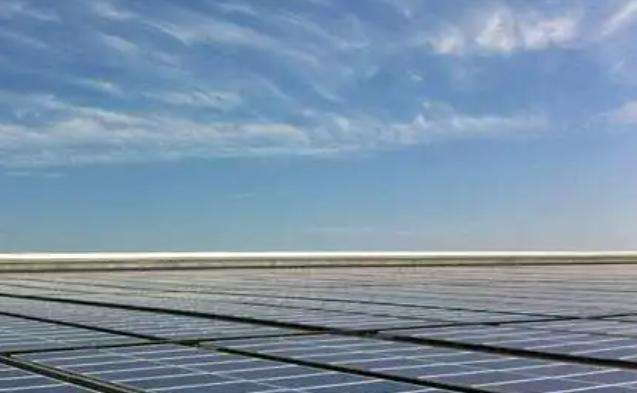The birth of the weathervane
The wind is invisible and mysterious, it makes us feel the warmth of nature; the wind is powerful and fierce, it makes us fear and even fear its anger.
Aristotle said that the wind is the breath of the earth. The wind is with us all the time and affects us.
The weather vane is the oldest meteorological instrument in human history. In their struggle with nature, ancient people began using the most primitive strips of cloth and flags to try to identify the direction of the wind.
The ancient Greeks had long used wind direction to distinguish wind. People deify the wind. They define east wind, south wind, west wind and north wind based on the main wind direction and deity. Later, Aristotle added one between each two directions, subdividing it into eight wind directions. This is consistent withc the weather vane atop the Tower of the Wind, an octagonal building built in Athens in the 1st century BC.
Later, the concept of wind direction became more and more refined and clearer, forming a pattern with east, west, south and north as the main base points, and the southeast and northwest as several lateral positions. is often drawn on the compass, map or nautical chart, so that people can identify the direction.
The oldest weather vane in the world is the wind-shaped bird invented during the Western Han Dynasty in China, over 100 BC. In the first year of the reign of Emperor Wu of the Han Dynasty, four bronze phoenixes were installed atop the Jianzhang Palace in Chang'an. At the lower ends, rotating shafts swayed in the wind. Two of them are installed on the Phoenix Tower to the east of Jianzhang Palace, one is installed on the gate muraone of Yutang to the south of Jianzhang Palace and the other is installed on the garden tower to the north of Jianzhang Palace. This predates the invention of similar weathervanes in Europe by over a thousand years.
Today, the only ancient phoenix-shaped weathervane that has been handed down and is still in use is the Xiangfeng that stands atop the Yuanjue Temple tower at the northern foot of Hengshan Mountain. The flying phoenix is made of iron and black. According to legend, the phoenix which is mainly blue and black is called "Yuan". Because there is a bell hanging on the eaves of the tower, this wind tower is called "Yuanjue". Temple Bell Luan Wind Tower". This weather vane has passed through more than 800 years.
There is a story in the Bible. At that time, Saint Peter did not dare to confess Jesus Christ three times, but the chicken next to him kept singing... Later, in order to commemorate this chicken, people made a weathervane in the shape ofof “rooster”. Chicken-shaped weathervanes first appeared on church roofs in the 9th century AD. Nowadays, chicken-shaped weathervanes can be seen all over Europe, but most people have long forgotten their original religious significance.
Early anemometers were limited to qualitative wind measurements, and the magnitude of wind force was determined only by visual inspection of the magnitude of shaking of tree branches.
How tall is the tallest wind tower in China?
In the western mountainous area of Hengshui City, Mengjin County, the first phase of the multi-stage vertical axis maglev tower multi-wind turbine power generation project is in progress. construction course.
This project was built by Luoyang Fuxiao Wind Power Co., Ltd. This is a new energy project that supports development. Heis located in Guanghua and Hongqiao Villages, Hengshui Town, using barren hills and slopes. Wind resources, using magnetic levitation breeze power generation, to promote the development of green, clean and new energy. The project is expected to be completed in three phases, with a total of 152 wind towers and 1 station overpressure built. Once completed and put into operation, it will not only save around 108,000 tonnes of coal and reduce carbon emissions by around 2.04 billion tonnes. per year, but will also resettle almost 100,000 local residents. Hundreds of farmers found jobs and increased their income.
Huastron prestressed frame steel tube wind tower invested by Qingdao Jinjiaozhou Asset Management Co., Ltd. measures 170 meters high.
The shape now designed by “Huastron” ist a type of frame. The four corners have stronger bearing capacity through the lower tower body, which solves the problem of welding fatigue and can effectively avoid resonance. , this technology with more than 20 national and international patents can significantly increase the height of the tower, better utilize wind resources and increase the effective hours of electricity generation.
The production process of wind towersGenerally as follows:
Cutting by CNC cutting machine, thick plates need be beveled, after the plate is formed by the plate rolling machine, the spot welding, positioning and welding of the inner and outer longitudinal seams are carried out after confirmation. After the roundness inspection, if there are any problems, a second rounding is performed. The single-section cylinder is welded, a hydraulic unit is usedused to align the rollers. Once the frame is assembled and tack welded, the interior and exterior circumferential seams are welded.
After straightness inspections and other tolerance inspections, after flange welding, welding non-destructive testing and flatness inspection, sandblasting and painting, after installation of parts After internal inspection and finished product inspection, they are transported to the installation site. .














